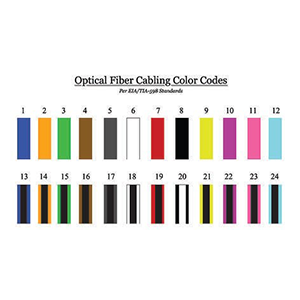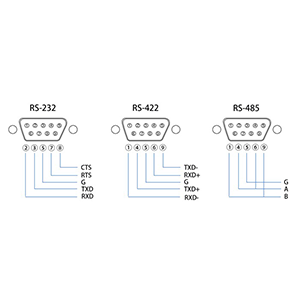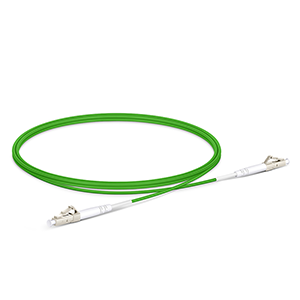Optical isolators play an important role in fiber-optic communication systems. This article will explore the working principles of optical isolators. We will first define the structure and composition of optical isolators and explain their functions in fiber-optic systems. Next, we will analyze the working principles of optical isolators in depth, including asymmetric transmission characteristics, polarization dependence, Faraday rotor effect, and interference effect.
We will explain how these physical mechanisms achieve unidirectional transmission and prevent optical signals from interfering with the system during reverse propagation. Subsequently, we will introduce key performance parameters such as isolation ratio and insertion loss, and explain how to choose the right optical isolator based on application requirements. Finally, we will analyze the role of optical isolators in devices such as lasers and optical amplifiers, and explore their application scenarios in other fiber-optic systems.
Basic concept of optical isolator
Let me introduce you to the basic concept of optical isolator:
Structure and composition of optical isolator:
Optical isolator is an optical device that is transparent in one direction and blocks in the other direction. It is mainly composed of the following components:
- Input port – inputs the forward propagating optical signal
- Polarization element – converts non-polarized light into a single polarization state
- Non-reciprocal element – realizes the isolation of forward and reverse light
- Output port – outputs the forward propagating optical signal
These components are combined to form the basic structure of the optical isolator.
Functions of optical isolators in optical fiber systems:
Optical isolators have the following important functions in optical fiber communication systems:
(1) Isolate reverse light
- Block the optical signal propagating backward from the output end
- Prevent these reverse signals from interfering with the light source and other front-end circuits
(2) Protect the light source
- The reverse light at the input end of the isolator cannot return to the light source
- Protect the light source from damage by feedback signals
(3) Improve system stability
- Eliminate reverse propagation interference and ensure stable and reliable operation of the system
- Especially suitable for feedback-sensitive devices such as lasers and amplifiers
(4) Isolate mutual coupling interference
- Isolate reverse coupling between different devices
- Ensure that each device works independently and reduce system complexity
In short, optical isolators are important passive optical devices in optical fiber communication systems, which can effectively isolate forward and reverse light propagation and ensure the stability and reliability of the system.
The working principle of optical isolator
Let me introduce the working principle of optical isolator in detail:
Asymmetric transmission characteristics:
- The optical isolator shows significant asymmetric transmission characteristics in forward and reverse propagation
- In forward propagation, the optical signal can pass through the isolator smoothly
- In reverse propagation, the isolator will block the propagation of the optical signal
The physical mechanism for achieving this asymmetric transmission is to use the different polarization states of light in different propagation directions:
- The forward propagating light is converted into a single polarization state through the polarization element
- This polarization state can pass through the non-reciprocal element of the isolator
- The reverse propagating light will change its polarization state
- Thus being non-reciprocally Easy to absorb or deflect components, unable to pass through the isolator
Polarization dependence:
- The isolation effect of the optical isolator is highly dependent on the polarization state of light
- The isolator uses the change of polarization state of forward and reverse propagating light to achieve isolation
- Through the conversion of polarization state, the reverse light cannot pass through the isolator
Interference effect:
- Some optical isolators use the principle of optical interference to achieve isolation
- By constructing the difference in interference conditions between the forward and reverse optical paths
- Suppress the propagation of reverse light, thereby achieving the purpose of isolation
In short, the optical isolator uses physical mechanisms such as changes in polarization state, magneto-optical effect, and interference effect to achieve asymmetric transmission of forward and reverse light propagation, thereby playing an isolation role.
Main performance indicators of optical isolators
Let me introduce you to the main performance indicators of optical isolators and how to choose the right isolator:
What are the key performance indicators:
(1) Isolation ratio
- Measures the isolation effect of the isolator in forward and reverse transmission
- Defined as the ratio of forward power to reverse power, in dB
- The higher the isolation ratio, the better the isolation performance
(2) Insertion loss
- The loss of the optical signal passing through the isolator during forward propagation
- Including the loss of various components such as polarization elements and non-reciprocal elements
- The insertion loss should be minimized to reduce system loss
(3) Polarization-dependent loss
- Loss changes due to changes in the polarization state of the optical signal
- Reflects the difference in the transmission of the isolator to light of different polarization states
- Polarization-dependent loss should be as small as possible
(4) Maximum optical power
- The maximum forward and reverse optical power that the isolator can withstand
- Determines the application scope of the isolator in high-power optical communication
- It is necessary to select the appropriate power level according to the actual application scenario
How to choose an optical isolator:
(1) Determine the requirements
- Clarify the specific requirements for the isolator performance according to the actual application scenario
- Such as isolation ratio, insertion loss, optical power tolerance, etc.
(2) Parameter trade-offs
- Evaluate the impact of each performance indicator on system performance
- Weigh the trade-offs and select the most cost-effective solution that meets the needs
(3) Selection test
- Perform performance testing and verification of alternative isolators
- Ensure that the technical requirements of actual applications are met
(4) Environmental adaptability
- Consider the stability of the isolator in the actual working environment
- Including the influence of factors such as temperature, humidity, and vibration
In short, choosing a suitable optical isolator requires comprehensive consideration of key performance indicators such as isolation ratio, insertion loss, polarization dependence, and maximum optical power, and selection is made in combination with the needs of actual application scenarios.
Application of optical isolators in optical fiber systems
Let me introduce you to the typical applications of optical isolators in optical fiber communication systems:
Application to lasers:
- Some reverse feedback signals will be generated at the output of the laser
- If these reverse light signals are reflected back into the laser
- It may cause the working state of the laser to be unstable or even damaged
- Therefore, it is very important to connect an optical isolator in series at the output of the laser
- Can effectively isolate reverse light and protect lasers from interference
Applied to optical amplifiers:
- Optical amplifiers also generate some reverse-propagating spontaneous radiation signals
- If these signals are reflected back into the amplifier
- It will cause problems such as gain saturation and increased noise
- Use optical isolators at the output of the amplifier
- These reverse lights can be isolated to improve the stability of the amplifier
Applied to fiber loops :
- In a fiber optic loop, optical signals will be transmitted in a loop
- There will be some reverse propagation signals inside the loop
- Using an isolator can block these reverse lights,
- Avoid mutual interference in the loop and ensure loop stability
Applied in optical communication systems:
- At both the transmitting and receiving ends of the optical communication system
- Optical isolators are needed to isolate reverse propagation interference
- Ensure that each component of the system works independently and improves communication reliability
Applied to optical sensing systems:
- Light sources and detectors in optical sensing systems
- Also need to use isolators to isolate each other
- Prevent reverse signals from interfering with light sources and detectors
In short, optical isolators play a very important role in various optical fiber applications such as lasers, optical amplifiers, optical communication systems, and optical sensing systems, ensuring the stable and reliable operation of related equipment and systems.
Summary
Optical isolators play a key role in protecting optical fiber systems from interference from reverse optical signals. Our company has long been focusing on the research and development and production of optical communication equipment and its supporting products, and has rich industry experience. The optical isolator products we provide have reached the industry-leading level in terms of isolation performance, insertion loss, working bandwidth, etc., and can meet your strict requirements for the reliability of optical fiber systems.
Whether you are using optical isolators in lasers, optical amplifiers, or other fiber applications, we can provide you with professional selection services and technical support. At the same time, our team of engineers will provide you with detailed installation instructions and maintenance suggestions to help you fully utilize the performance advantages of optical isolators. Contact us now to learn more.
Optical Isolator FAQ
An optical isolator is a passive optical device that allows light to travel in one direction while blocking light traveling in the opposite direction, preventing undesirable optical feedback or reflections.
The primary function of an optical isolator is to protect sensitive optical components, such as lasers, amplifiers, or detectors, from the harmful effects of back-reflected or backscattered light.
An optical isolator typically consists of a Faraday rotator, two polarizing elements (polarizer and analyzer), and a magnet. The Faraday rotator rotates the polarization of light traveling in one direction but not the other, allowing unidirectional light transmission.
The Faraday rotator is the key component that enables the unidirectional operation of the optical isolator. It rotates the polarization of light traveling in the forward direction by 45 degrees, while leaving the polarization of light traveling in the reverse direction unchanged.
The polarizer and analyzer work in conjunction with the Faraday rotator to allow light to pass in the forward direction but block light traveling in the reverse direction. The polarizer and analyzer are aligned to only transmit light with the desired polarization.
Optical isolators are designed to operate at specific wavelength ranges, often in the near-infrared region, such as 1310nm or 1550nm, which are commonly used in fiber optic communications and other photonic applications.
Important performance parameters include isolation ratio, insertion loss, return loss, and operating wavelength range, which determine the isolator’s effectiveness in suppressing unwanted optical feedback.
Optical isolators are typically spliced or connected inline with the fiber optic cable, often at the output of a laser or optical amplifier, to protect these sensitive components from reflected signals.
Optical isolators are widely used in laser-based systems, fiber optic communication networks, high-power fiber amplifiers, and various other photonic and optoelectronic applications.
Ongoing advancements include the development of more compact, low-loss, and broadband optical isolators, as well as the integration of isolators with other photonic components for improved system integration and performance.




